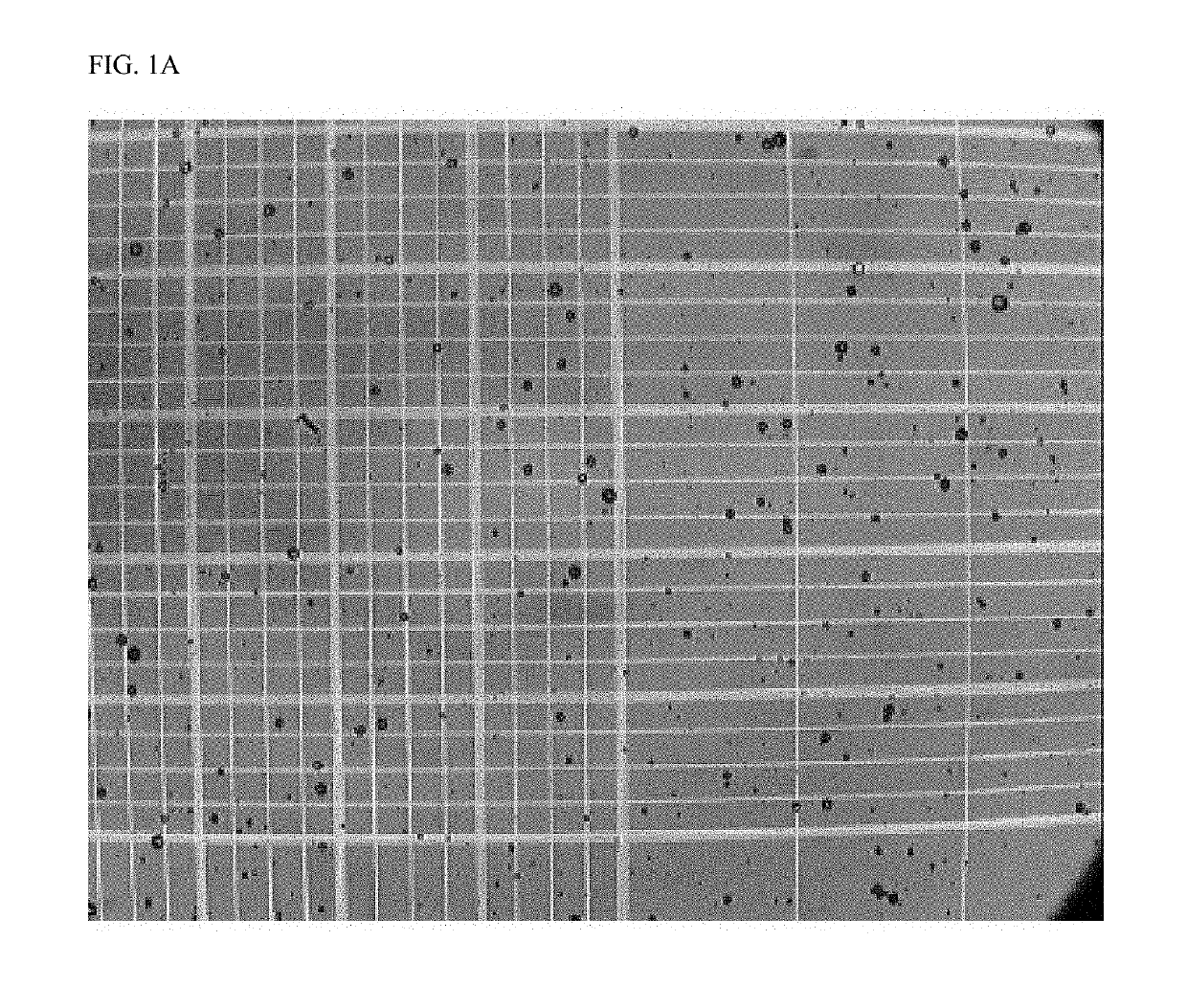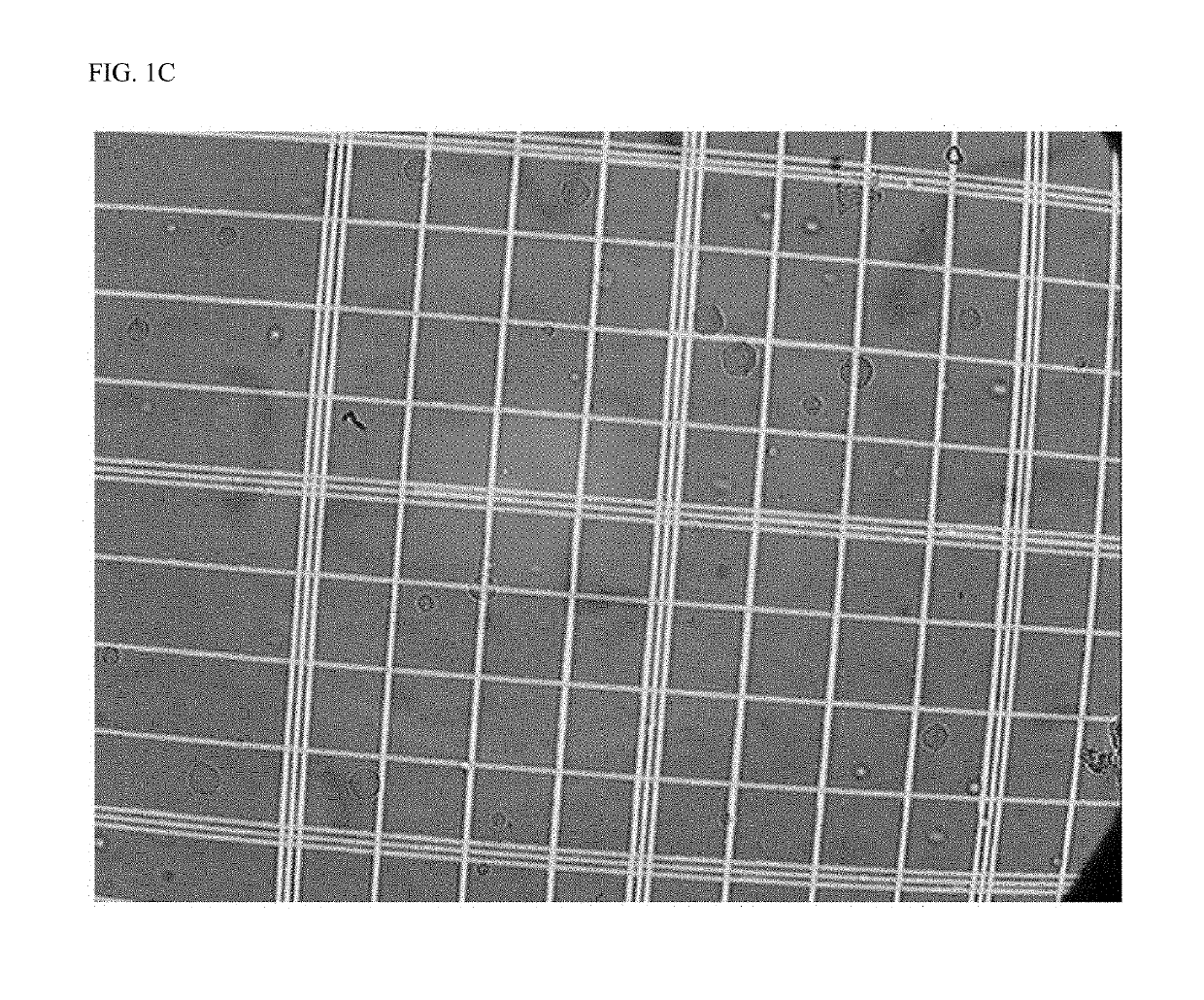Crosslinked particles
a crosslinked particle and particle technology, applied in the field of crosslinked particles, can solve the problems of difficult to control particle size and morphology, limited loading of a given drug amount, and inability to produce crosslinked particles, etc., and achieve high reproducibility and reliability, uniform size and shap
- Summary
- Abstract
- Description
- Claims
- Application Information
AI Technical Summary
Benefits of technology
Problems solved by technology
Method used
Image
Examples
example 1
on of PVL-co-PAVL Copolymer
[0173]Benzyl alcohol (60 μl), valerolactone (8 mL) and allylvalerolactone (2 mL) were dissolved in toluene (20 mL) and triazabicyclodecene (catalyst) was added 2% mol:monomer and stirred at room temperature for 4 hours. FIG. 10 shows a 1HNMR spectrum of PVL-co-PAVL polymer with a molecular weight of 17200 g / mol (i.e., about 128 units of valerolactone and about 14 units of allylvalerolactone). The number average molecular weight of the polymer was about 12,200 g / mol, with a peak molecular weight of about 14100 g / mol. The polydispersity index was bout 1.41. The melting temperature was about 35° C. The temperature of recovery was about 11° C. FIG. 10B shows a gel permeation chromatography plot of the PVL-co-PAVL nanoparticles.
[0174]The mixture was subjected to gel permeation chromatography. The weight average molecular weight was about 17,200 g / mol.
example 2
on of Polyvalerolactone / Polyallyl Lactic Acid (PVL-co-PAL)
[0175]Allyl lactide is prepared according the method disclosed in U.S. Pat. No. 8,758,828 to Markland, et. al. Benzyl alcohol, valerolactone and allyl lactide are dissolved in triazabicyclodecene and stirred at room temperature for 4 hours. The resulting polymer is isolated and used for crosslinking microparticles.
example 3
on of Crosslinked Microparticles Comprising Polycaprolactone and Polyallylvalerolactone
[0176]Polycaprolactone homopolymer (PCL; 50 mg; 50 kDa; 1 mmol), polyvalerolactone (PVL; 50 mg) and polyallylvalerolactone (PAVL; 50 mg (6700 g / mol; 19% allylvalerolactone and 81% valerolactone)) and hexanedithiol (1 —SH group per alkene) were dissolved in 1 mL dichloromethane. 2,2-Dimethoxy-2-phenylacetophenone (DMPA; 3.4 mg; 0.2 equivalents per alkene) was added and the solution was added dropwise to 20 mL of water containing 5% polyvinyl alcohol. The mixture was homogenized with stirring (i.e., a Polytron® mechanical homogenizer at 22,000 rpm) for five minutes. The homogenized mixture was irradiated at 365 nm-4 mW under stirring for 30 minutes.
[0177]The mixture was stirred for 3 hours to allow the dichloromethane to evaporate. The mixture was then centrifuged at 4000 rpm at 10° C. for 10 minutes. The aqueous solution containing polyvinyl alcohol was poured off and the particles were rinsed with...
PUM
 Login to View More
Login to View More Abstract
Description
Claims
Application Information
 Login to View More
Login to View More - R&D
- Intellectual Property
- Life Sciences
- Materials
- Tech Scout
- Unparalleled Data Quality
- Higher Quality Content
- 60% Fewer Hallucinations
Browse by: Latest US Patents, China's latest patents, Technical Efficacy Thesaurus, Application Domain, Technology Topic, Popular Technical Reports.
© 2025 PatSnap. All rights reserved.Legal|Privacy policy|Modern Slavery Act Transparency Statement|Sitemap|About US| Contact US: help@patsnap.com



